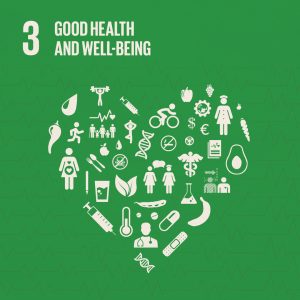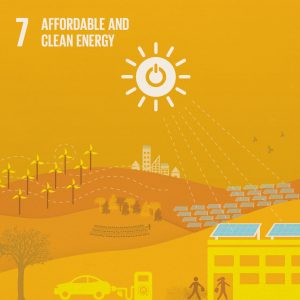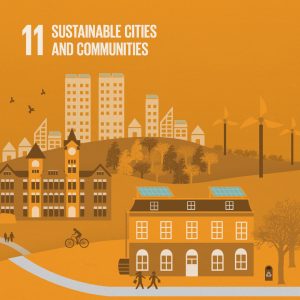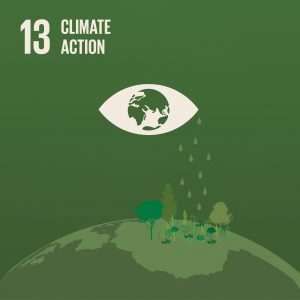By Randy Martin, Office of Sustainability
The Intergovernmental Panel on Climate Change (IPCC) recently released its latest report assessing the current status and trends of climate change, future risks and the long- and near-term responses. This report contained a sentence that has stuck with me since I first read it:
“There is a rapidly closing window of opportunity to secure a livable and sustainable future for all.”
It felt surreal to me to read a sentence like that from the premier global organization tracking climate change. It puts the task of decarbonization, mitigation, and adaptation into perspective. It felt overwhelming. It truthfully is a daunting task for our species to address, but it isn’t unattainable.
Even though much of the report is grim, it also says,
“Deep, rapid, and sustained reductions in greenhouse gas emissions would lead to a discernible slowdown in global warming within around two decades, and also to discernible changes in atmospheric composition within a few years.”
This is good news. We have a high level of certainty that emissions reductions will have a quick and felt impact. What they’re saying is that every bit of heat-trapping gas that is removed or prevented from getting into the atmosphere is important. That is why, regarding the STARS1 sustainability assessment, understanding and measuring our institutional emissions matter. STARS asks for the public disclosure of all our greenhouse gas emissions. When we know what we’re contributing, we can plan and track our progress.
The STARS category of Air & Climate aligns with the following United Nations Sustainability Development Goals:
- Goal 3: Ensure healthy lives and promote well-being for all at all ages
- Goal 7: Ensure access to affordable, reliable, sustainable, and modern energy for all
- Goal 11: Make cities inclusive, safe, resilient, and sustainable
- Goal 13: Take urgent action to combat climate change and its impact
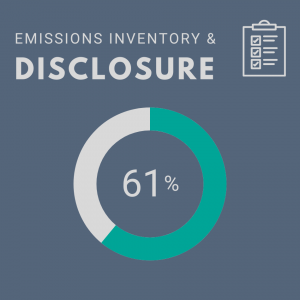
Subcategories of Air and Climate in STARS
- Emissions Inventory & Disclosure: Institutions must account for and publicly disclose their greenhouse gas and air pollutant emissions to receive this credit.
Auburn’s Score: 1.83/3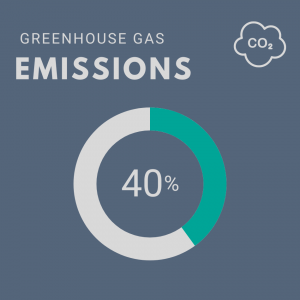
- Greenhouse Gas Emissions: This credit scores institutions based on their scope 1 and 2 greenhouse gas reductions. Scope 1 emissions are directly owned or controlled by the institution, think furnaces and vehicles. While scope 2 typically refers to purchased electricity. Auburn’s Score: 3.21/8
Reflections
In 2010 Auburn University committed to becoming carbon neutral by 2050. Unfortunately, we’re not on track to reach that goal. Auburn’s emissions are down. There has been a 10% reduction in total scope 1 and 2 emissions from our 2008 baseline. Emissions per campus user (students, faculty, and staff) are down 26%. Auburn has been working diligently to retrofit older buildings. Most new buildings built since 2008 are LEED-certified or are in the process of being certified. The majority of our efforts are going into energy reductions and efficiencies. Secondary strides are being made in transportation. Our bus service recently purchased 12 hybrid-electric buses, and micro-mobility has finally arrived on campus.
These numbers are certainly in the right direction. However, as the IPCC explains in their latest report, we don’t have a single second to waste. There is no doubt that Auburn could do better in every area, but I think there are two areas that would have a quick and significant impact.
Step 1: Solar
We have to stop relying on fossil energy. Solar is a very viable option in our geographical location. Solar is one of the cheapest forms of energy, and prices have only been falling. We live in a relatively sunny area of the country. According to the Southern Environmental Law Center, Alabama ranks 13th among US states for raw solar energy potential. Installing solar on Auburn’s campus has been discussed at multiple levels, but no plan is set in place.
Step 2: Electrify the Fleet
Auburn, but more accurately the units within Auburn, owns a lot of vehicles. Cars, golf carts, trucks, and SUVs are prominent on campus. Through federal government incentives, and hopefully soon some state incentives, it is more affordable now to purchase electric vehicles (EVs) than ever. Colleges and departments looking for new vehicles should seriously consider purchasing an EV. The EV selection is expanding every year. Soon enough, EVs will meet every need, but those whose current needs can be met by an EV should seriously consider purchasing one. That includes golf carts. Many of the carts on campus are gas-powered, but there have been excellent, reliable battery options for a long time.
I want to again praise the university’s efforts in retrofitting and increased energy efficiency. That is incredibly important. But as Saul Griffith, founder of OtherLab and Rewiring America, once put it,
“You can’t efficiency your way to zero.”
That is where we must get. In 2010, Auburn committed to reaching carbon neutrality by 2050 when we signed the President’s Climate Commitment, resulting in the creation of the Climate Action Plan. Our next step in this journey is to wean ourselves off fossil fuels as much as possible and lean into clean electricity.
- The Sustainability Tracking, Assessment, and Rating System (STARS) program is a self-reporting framework for institutions of higher education to track their sustainability performance created by the Association for the Advancement of Sustainability in Higher Education. Overall, STARS is made up of 211 possible points in 64 different subcategories. The subcategories are grouped by Academics, Engagement, Operations, and Planning & Administration. Additionally, participants may receive extra points for exemplary and innovative practices. In this summary, our score is shown over the amount of possible points for each credit. View Auburn University’s 2022 STARS Report for more details.
Learn about the SDGs & AU and our contributions related to this post.

